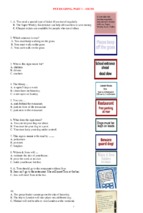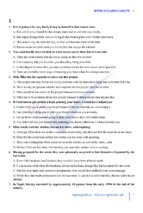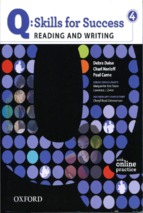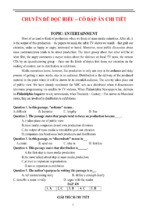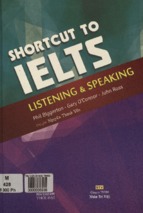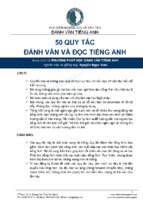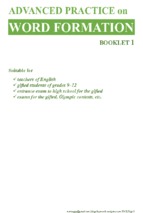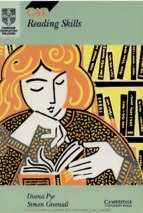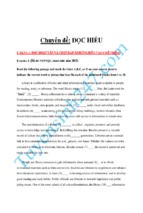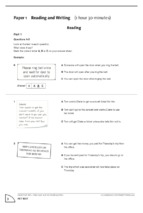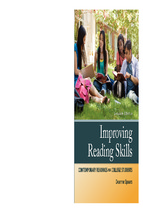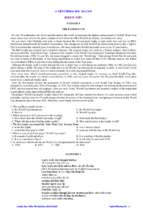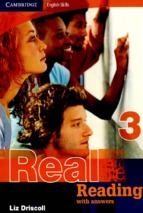READTHEORY
®
TEACHING STUDENTS TO READ AND THINK CRITICALLY
"A Streetcar Named Desire"
Reading Comprehension Assessment
ReadTheory.org
For exciting updates, offers, and other helpful information, follow us on Facebook at
www.facebook.com/ReadTheory and Twitter at www.twitter.com/ReadTheory.
Comprehension materials similar to those featured in this workbook are available online at
www.ReadTheory.org -- an interactive teaching tool where students can take reading comprehension
quizzes, earn achievements, enter contests, track their performance, and more. Supplementary materials
to this workbook are available in printable worksheet form at www.EnglishForEveryone.org.
COPYRIGHT NOTICE
Reproduction and or duplication on websites, creation of digital or online quizzes or tests, publication on
intranets, and or use of this publication for commercial gain is strictly prohibited.
Use of this publication is restricted to the purchaser and his or her students. This publication and its
contents are non-transferrable between teachers.
All materials in our publications, such as graphics, text, and logos are the property of Read Theory LLC
and are protected by United States and international copyright laws.
© Copyright Read Theory LLC, 2012. All rights reserved.
© Copyright Read Theory LLC, 2012. All rights reserved.
1
READTHEORY
Passage
Name________________
Date________________
• Reading Comprehension Assessment
Directions: Read the passage. Then answer the questions below.
A Streetcar Named Desire - Passage 1
A Streetcar Named Desire is a classic of the American theater. Tennessee Williams’ landmark
work was a tour de force in its original stage production in 1947 and continues to resonate with audiences
and readers today despite—or perhaps because of—its simplistic though layered story. A faded Southern
belle, Blanche DuBois, arrives at her sister’s seedy New Orleans apartment where she is tortured by her
brutish brother-in-law, Stanley Kowalski. Blanche puts on airs of class and happiness throughout the play,
though internally she is miserable and haunted by her tragic and scandalous past. Stanley forces Blanche
to face her dolorous reality with his vitriol and, finally, his act of sexual aggression, and in doing so, he
causes her to lose her tenuous grip on sanity. Most have argued (correctly) that the play is about the
ways the past haunts our present or (again correctly) that it is about the ways class and sexuality impact
our lives. However, few have seen the play for what it is: an allegory for the theater itself.
Before Williams wrote Streetcar, the theater had been dominated by melodrama. A brief interlude
in the 1930s brought political theater to center stage (pardon the pun), but by the 1940s, its principal
playwright, Clifford Odets, had left New York for Hollywood, and the sensationalized and maudlin form of
melodrama once again flourished. The theater was in limbo, and Williams had a desire to bring something
new to the world. It would bring the realism of the political theater of the 1930s but without the political
(read: socialist) underpinnings. To that end, he created lifelike characters who spoke in realistic dialect.
But to make his point that melodrama was flawed, he added an equally unrealistic character.
Blanche, unlike the other characters, speaks theatrically, acts larger than life on stage, and uses floral
language and heightened mannerisms. Blanche is a character not to be trusted. She lies about
everything, and the only thing that finally exposes her lies is reality itself: Stanley. He finally forces her off
the stage and into the insane asylum by forcing himself on her sexually. And with that, realism forcibly
removed melodrama from the stage.
A Streetcar Named Desire- Passage 2
It is not possible to imagine A Streetcar Named Desire without the influence of Marlon Brando,
the actor who rose to fame playing Stanley Kowalski. On the page, the part is fairly simplistic. Stanley is a
monster and a beast without any redeeming qualities. But Brando and the play’s original director, Elia
Kazan, imagined the character as having a soft underbelly, rooted in his own sorrow, insecurities, and
soulful complexity. Brando’s Stanley is a brute, yes, but he is a brute who hates the fact that he is so
awful. He is also unable to control himself and his passions, and this lack of control is equally
embarrassing to him, even as it is also threatening to Blanche and alluring to her sister Stella.
For instance, after he hits Stella, he comes back to her, famously begging for forgiveness by
shouting “Stella” outside their apartment. But in Brando’s depiction on the stage and later on the screen,
he is soaked from the rain and looks completely desperate, as though he needs Stella to live. He looks
and seems totally helpless and weak, the exact opposite of the brute he appears later when he forces
himself onto Blanche.
The play is excellent and memorable, even when read. But it is Brando’s interpretation of the
male lead role that makes the play indelible. Without Brando, the play would still have a deep meaning,
but with Brando’s interpretation, the play becomes even more profound.
© Copyright Read Theory LLC, 2012. All rights reserved.
2
READTHEORY
Questions
1) Paragraph 1 of Passage 1 provides each of the following EXCEPT
A.
B.
C.
D.
E.
a critical interpretation of A Streetcar Named Desire
an explanation of why modern audiences connect with A Streetcar Named Desire
a brief plot synopsis of A Streetcar Named Desire
background information on the times that produced A Streetcar Named Desire
the author’s main argument concerning A Streetcar Named Desire
2) It can be inferred from Passage 1 that A Streetcar Named Desire
A.
B.
C.
D.
E.
was Tennessee Williams’ first play
is better on stage than in print
did not have socialist leanings
was not melodramatic
would not have been successful without Marlon Brando
3) According to Passage 1, the character of Blanche DuBois
A.
B.
C.
D.
E.
is intentionally overdramatic and theatrical
has never been to the city of New Orleans before
is recently married to Stanley Kowalski
is brutally honest and frank during the play
is firmly rooted in realism and sanity
4) Passage 2 argues that Marlon Brando’s portrayal of Stanley Kowalski
I. earned the actor great fame
II. is more nuanced than the part that is written
III. is what really made A Streetcar Named Desire a classic
A.
B.
C.
D.
E.
I only
II only
I and II only
II and III only
I, II, and III
5) Both Passage 1 and Passage 2 argue that
A.
B.
C.
D.
E.
the New York theater scene was blown away by A Streetcar Named Desire
Tennessee Williams wrote A Streetcar Named Desire to end melodrama
A Streetcar Named Desire has more than one true meaning
A Streetcar Named Desire only has power when performed on the stage
the character of Stanley Kowalski is simply a brute monster
6) The author of Passage 2 focuses on Marlon Brando’s portrayal of Stanley Kowalski as being
particularly memorable and powerful, whereas the author of Passage 1 focuses on Tennessee
Williams’ skilled writing. In your opinion, what makes for better drama: a high-quality script or
unparalleled acting? Can a drama be successful with one but not the other? Why?
_____________________________________________________________________________________________________________________________ _______________
_____________________________________________________________________________________________________________________________ _______________
__________________________________________________________________________________________________________________ __________________________
_____________________________________________________________________________________________________________________________ _______________
© Copyright Read Theory LLC, 2012. All rights reserved.
3
READTHEORY
Questions
____________________________________________________________________________________________________________________________________________
_____________________________________________________________________________________________________________________________ _______________
____________________________________________________________________________________________________________________________________________
_____________________________________________________________________________________________________________________________ _______________
____________________________________________________________________________________________________________________________________________
_____________________________________________________________________________________________________________________________ _______________
_______________________________________________________________________________________________________________________________ _____________
____________________________________________________________________________________________________________________ ________________________
_____________________________________________________________________________________________________________________________ _______________
_____________________________________________________________________________________________________________________________ _______________
__________________________________________________________________________________________________________________ __________________________
7) In paragraph 2 of Passage 1, the author suggests that drama in the 1930s was heavily influenced by
socialist playwrights and the politics of the era. In what ways do modern plays, shows, and films
reflect modern politics, if at all? Do you see any current trends in today’s media?
___________________________________________________________________________________________________________________________ _________________
_____________________________________________________________________________________________________________________________ _______________
____________________________________________________________________________________________________________________________________________
_____________________________________________________________________________________________________________________________ _______________
____________________________________________________________________________________________________________________________________________
_____________________________________________________________________________________________________________________________ _______________
_____________________________________________________________________________________________________________________________ _______________
__________________________________________________________________________________________________________________ __________________________
_____________________________________________________________________________________________________________________________ _______________
_____________________________________________________________________________________________________________________________ _______________
__________________________________________________________________________________________________________________ __________________________
_____________________________________________________________________________________________________________________________ _______________
____________________________________________________________________________________________________________________________________________
_____________________________________________________________________________________________________________________________ _______________
____________________________________________________________________________________________________________________________________________
© Copyright Read Theory LLC, 2012. All rights reserved.
4
READTHEORY
Answers and Explanations
1) D
Question Type: Detail
In the first paragraph, the author of Passage 1 mentions that A Streetcar Named Desire debuted in 1947, but it does not provide any
additional information about the era. That information does not come until the second paragraph of Passage 1. As such, choice
(D) is correct. In the first paragraph of Passage 1, the author actually provides two critical interpretations of Streetcar. He or she
writes that, “Most have argued (correctly) that the play is about the ways the past haunts our present or (again correctly) that it is
about the ways class and sexuality impact our lives.” Because of this sentence, choice (A) is incorrect. In the first paragraph of
Passage 1, the author states that Streetcar “continues to resonate with audiences and readers today despite—or perhaps because
of—its simplistic though layered story.” Thus, it does provide an explanation of why modern audiences like the play: the story.
Therefore, choice (B) is incorrect. The first paragraph of Passage 1 provides a synopsis of Streetcar in the middle of the paragraph.
There, the author explains that “a faded Southern belle” loses “her tenuous grip on sanity” due to confrontations with her brother-inlaw. As such, choice (C) is incorrect, and the first paragraph does provide a brief plot synopsis of the play. The author of Passage
1’s main argument about Streetcar is presented in the final sentence of paragraph 1. There, he or she writes that the play is “an
allegory for the theater itself.” Because of this, paragraph 1 clearly does provide the author’s main argument, and choice (E) is
incorrect.
2) C
Question Type: Inference
In paragraph 2 of Passage 1, the author argues that Tennessee Williams sought to “bring the realism of the political theater of the
1930s but without the political (read: socialist) underpinnings” when he wrote A Streetcar Named Desire. This implies
that Streetcar did not have socialist leanings, as Williams would not attempt to write a play without political leanings and then make
sure the play did have socialist leanings. As such, choice (C) is correct. Passage 1 states only that Streetcar was written by
Tennessee Williams and debuted in 1947. It does not state that the play was Williams’ first play though, as it does not provide much
information about Williams’ life. Because of this, choice (A) is incorrect. Passage 1 states only that Streetcar “resonates with
audiences and readers today.” This implies that the play has power both on stage and in print, but it does not suggest that the play
is better on stage than in print. Therefore, choice (B) is incorrect. The third paragraph of Passage 1 describes Blanche as an
“unrealistic character” who is melodramatic. This makes it clear that aspects of Streetcar are melodramatic, making choice (D)
incorrect. Passage 1 does not mention Marlon Brando at all. In fact, it is Passage 2 that argues that Streetcar was more successful
because of Brando’s inclusion. As such, choice (E) is incorrect.
3) A
Question Type: Detail
To answer this detail question, look for the part of Passage 1 that describes Blanche as she appears on stage. This occurs in
paragraph 3. There, the author states that Blanche “speak theatrically, acts arger than life on stage, and uses floral language and
heightened mannerisms.” This makes it clear that she is overdramatic and theatrical. The paragraph also states that Williams added
her “to make his point that melodrama was flawed.” This makes it clear that Blanche is intentionally overdramatic and theatrical,
making choice (A) correct. The first passage states that A Streetcar Named Desire takes place in New Orleans and that Blanche
arrives there at the beginning of the play. It does not, however, imply that Blanche has never been to New Orleans before the play.
Because of this, choice (B) is incorrect. The first paragraph of Passage 1 makes it clear that Stanley is married to Blanche’s sister,
as he is Blanche’s “brutish brother-in-law.” Thus, choice (C) is incorrect. The third paragraph of Passage 1 states that “Blanche is a
character not to be trusted” because “she lies about everything.” Thus, she is not brutally honest or frank, and choice (D) is
incorrect. In the third paragraph of Passage 1, the author writes that Blanche is the one character in Streetcar who is not rooted in
realism. Instead, she is “an equally unrealistic character” who ultimately ends up in an insane asylum. As such, choice (E) is
incorrect.
4) E
Question Type: Global
In Passage 2, the author introduces Marlon Brando as “the actor who rose to fame playing Stanley Kowalski.” This suggests that the
role earned Marlon Brando great fame and supports option (I). In Passage 2, the author also writes that the role of Stanley in print
“is a monster and a beast without any redeeming qualities” but that Brando “imagined the character as having a soft underbelly,
rooted in his own sorrow, insecurities, and soulful complexity.” All of this suggests that Brando added nuance and complexity to the
part, supporting option (II). At the end of Passage 2, the author writes that A Streetcar Named Desire is “excellent and memorable”
but that “it is Brando’s interpretation of [Stanley] that makes the play indelible,” or completely unforgettable. Thus, he or she argues
that Brando makes the play a classic, supporting option (III). Therefore (E) is correct.
5) C
Question Type: Global
The first passage presents three interpretations of the play: one from critics who have focused on the play’s theme of past and
present, one from those who have instead focused on sex and class in the play, and one from the author himself or herself that the
play is “an allegory for the theater itself.” The second passage presents two other interpretations, one based on reading the play and
one based on Marlon Brando’s interpretation of the male lead. The author of Passage 2 argues that Brando made the play more
complex, and states that the play “would still have a deep meaning” without Brando but “becomes even more profound” with his
interpretation. Thus, both authors agree that the play really has more than one true meaning, making choice (C) correct. Neither
passage mentions Streetcar blowing away audiences in New York. Instead, they both only imply that the play was a huge success
without stating where. As such, choice (A) is incorrect. Only Passage 1 suggests that Tennessee Williams wrote Streetcar as way of
criticizing melodrama, so there is no proof that the author of Passage 2 would agree with that statement. Because of this,
choice (B) is incorrect. Neither passage argues that Streetcar only resonates with audiences when it is on stage. In fact, both imply
that the play is still powerful even when read. Because of this, choice (D) is incorrect. Though Passage 1 does refer to Stanley as a
brute monster, Passage 2 argues that an interpretation of him sees him as being more complex and not purely brutish. Because of
this, choice (E) is incorrect, as there is no indication that both authors would agree that Stanley is purely a brute.
© Copyright Read Theory LLC, 2012. All rights reserved.
5
- Xem thêm -

